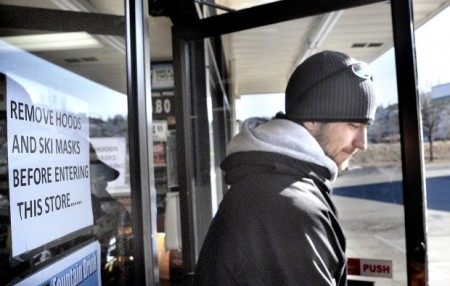We had a reader ask if humans should be walking, not with a heel-toe stride, but with a toe-heel stride. That is, should we walk with more of a midfoot- or forefoot-strike when barefoot? He also wonders if there is any research to back up such different striding in barefoot cultures, and wonders if such a stride might reduce various chronic problems.
From Dr. Lieberman’s research, we already know that barefoot runners automatically adopt a mid- to fore-foot strike. This is true whether the runners have never worn shoes, but it is also true for any experience barefoot runner. Barefoot runners very quickly learn not to do heel strikes because of the transient forces created.
There is some equivalent research regarding barefoot walking. For instance, “Influence of shoes and heel strike on the loading of the hip joint”, G. Bergmann et al., Journal of Biomechanics, Volume 28, Issue 7, Pages 817-827, found reduced torsion at the hip when barefoot. (This was a rather cool study, in that, when the subject got a necessary hip implant, he was given one with instrumentation as part of the implant.) “Walking Barefoot Decreases Loading on the Lower Extremity Joints in Knee Osteoarthritis”, N. Shakoor and J. Block, Arthritis & Rheumatism, Vol. 54, No. 9, September 2006, pp 2923–2927, found that walking barefoot reduced loads on the knee of about 12%. Interestingly, they found that as people walked barefoot they altered their stride. This study found that, just as often happens for the barefoot runners, people increased their cadence and reduced their stride length, even while maintaining the same speed. However the study did not report on any difference in heel-strike patterns.
Among the members of the Society for Barefoot Living, there does not seem to be a particular preference regarding heel-strike or midfoot-strike walking. There certainly is not the “striking” difference that is seen for running. Some folks are perfectly happy heel-striking (I am one of those), while others walk with more of a mid-strike. (Forefoot striking while walking seems to look pretty odd.) Many of the midfoot-strikers look like they are about the heel-strike, but at the last moment they rotate their feet just enough to land midfoot.
There does not seem to be any studies making this comparison among cultures that regularly go barefoot.
One of the things that makes it easier to midfoot-strike barefoot, and that also probably reduces the strike force even when heel-striking, is the absence of the heel of a shoe. For the barefoot running study, just the presence of the heel made it difficult for the foot to rotate down enough to lessen that strike. This also seems to apply when walking. When wearing a shoe (almost all of which have built-up heels) it is quite difficult to avoid heel-striking, and that heel-striking is often at a more oblique angle. When barefoot, it’s just plain easier to land with more of a midfoot-strike.
I suspect that heel-striking when barefoot is fairly natural. After all, evolution provided us with the very large calcaneal bone (the heel bone) that is well-reinforced for being landed upon. There is also a lot of padding under the heel bone, and we know it’s not there for barefoot running (in which we shift our gait). If we didn’t heel-strike while walking there would be no need for that large bone there, so it’s pretty likely that doing so is physiologically “acceptable”. What is not acceptable (that is, kind on the body) are the increased forces that come from wearing a shoe heel. And don’t get me started on the knee forces for really high heels.
Finally, Society for Barefoot Members members report that all sorts of back and knee pains that they used to have disappeared when they started to go barefoot. Furthermore, when they are forced to wear shoes again, those aches and pains re-appear. There does seem to be a cause-and-effect between the reduced forces of going barefoot and the health of the support system for our bodies.
[Note: I am now blogging mostly over at my Ahcuah blog.. If you like what you read here, you might check things out over there.]



